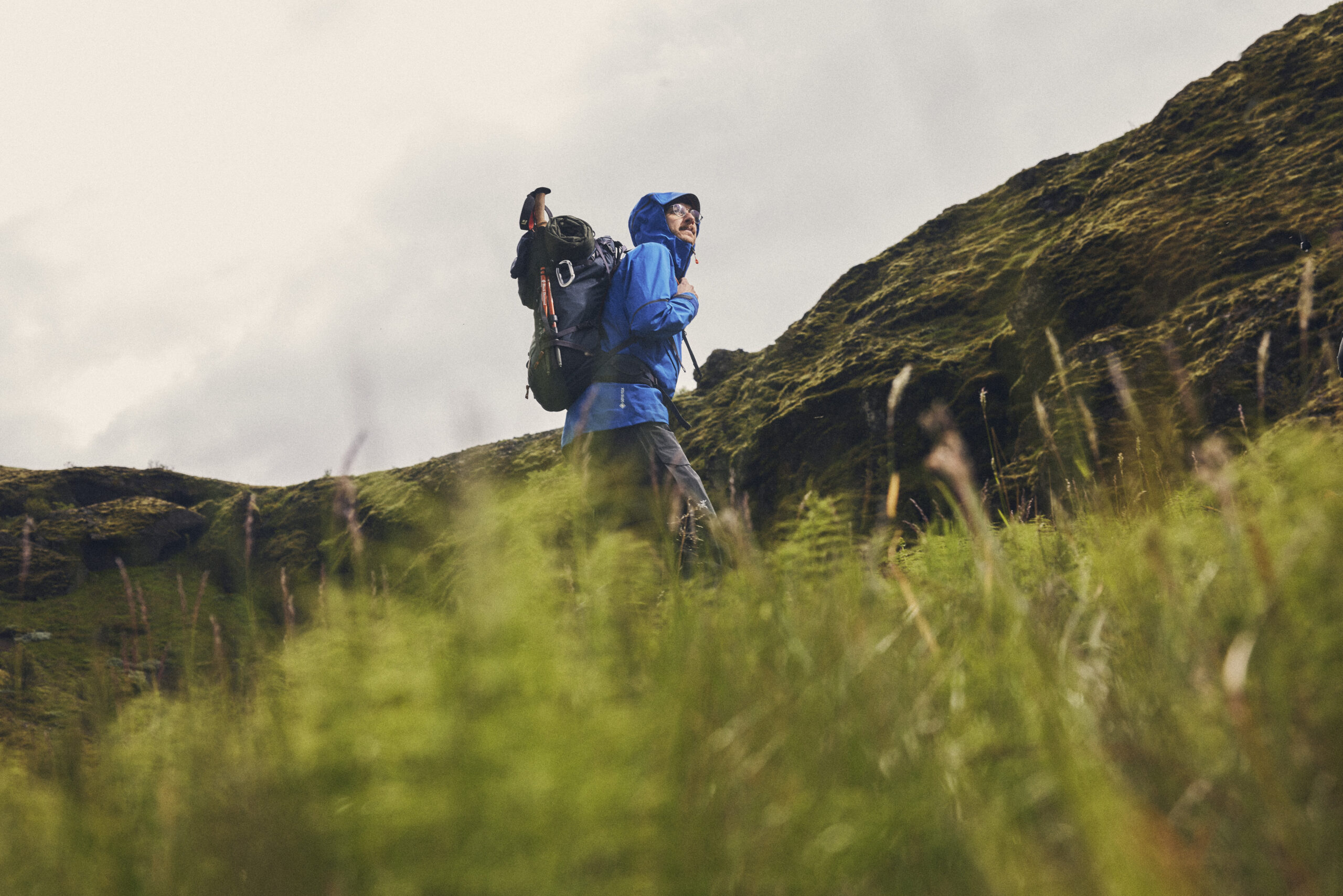Photographs courtesy of the Gore-Tex Brand
The path to purchasing outdoor gear can feel like a quest for the Holy Grail. There are many factors to consider, including sizing, materials, fit, construction, durability, and brand ethics or environmental impact. Whether it’s a pair of hiking boots or a puffy jacket, the mission always starts with research and ends with whatever I can find that meets most of my requirements. Sometimes, purchasing sleeping bags or backpacks feels like a bit of a shot in the dark—you hope your hard-earned dollars are well-spent.
One of the privileges of writing for Expedition Portal and Overland Journal comes from gear reviews, which allow me access to many pieces of outdoor wear and overland products I wouldn’t otherwise be able to try. I believe there is value in transparency and familiarizing ourselves with companies on a deeper level to help us make informed choices as consumers.
Accordingly, Overland International Associate Editor Stephan Edwards and I will introduce a new series of articles to Expedition Portal in the coming months that focus on what benefits brands have to the overland traveler while deep diving into some of the production aspects and, hopefully, making the purchasing process a bit easier. No one piece of gear will suit everyone, but the ability to make educated decisions and meet the faces behind the brands will, hopefully, make the experience slightly less rigorous.
Our first company profile features Gore-Tex. I’m sure most of you (if not all) are familiar with the brand or have noticed its little labels on shoes, jackets, or gloves at some point or another. An industry leader, Gore-Tex fabric was the first breathable, waterproof, and windproof fabric on the market, revolutionizing the way we play outdoors. How is Gore-Tex relevant to the overland traveler? I connected with Kerry Summers, Global Marketing Leader of Gore Consumer Fabrics, to find out.
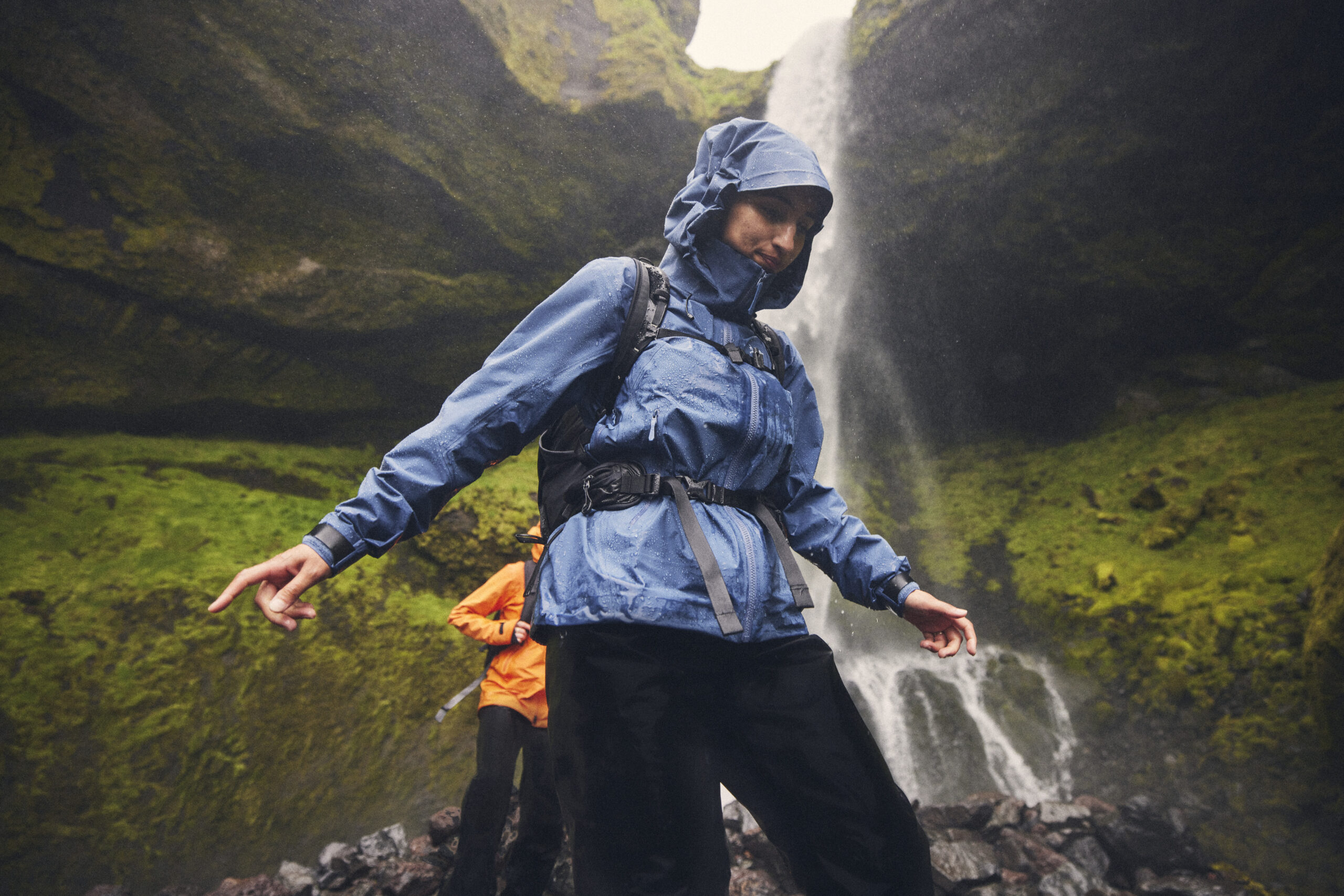
What is the origin story behind the Gore-Tex brand?
Wilbert (Bill) and Genevieve (Vieve) Gore launched W. L. Gore & Associates (Gore) in the basement of their home in Newark, Delaware in 1958 after Bill left DuPont to pursue what he believed was the untapped potential of PTFE (polymer polytetrafluoroethylene). Fueled by an entrepreneurial spirit, Bill and Vieve explored new opportunities to improve lives and industries through materials science innovation.
Gore’s first product was a PTFE-coated flat cable. In 1969, Bill and Vieve’s son, Bob, set out to solve a challenge—to stretch PTFE by 50 percent to fulfill an ambitious order. At the time, nothing existed in the scientific literature that suggested PTFE could be stretched more than 10 percent. One day, after failing to stretch the material by conventional means, Bob grabbed a rod of PTFE and yanked it in frustration. Instead of breaking, the rod stretched the full length of his arm span and expanded.
This was the creation of expanded polytetrafluoroethylene (ePTFE), the discovery of an incredibly strong, microporous material with a list of characteristics including low water absorption and good weathering properties that resulted when rapidly stretching PTFE. The very first patents for product technologies made with Gore’s signature polymer ePTFE were issued in 1970, with the first commercial orders for Gore-Tex Fabric received in 1976. Gore-Tex fabric became the first breathable, waterproof, and windproof fabric on the market.
Having applied more than four decades of polymer processing experience to the development of ePE, Gore scientists leveraged their expertise to discover how polyethylene (PE) could be expanded to create a microporous ePE material.
In Fall/Winter 2022, the Gore-Tex Brand and select customers brought the first products to market with a new, innovative expanded polyethylene (ePE) membrane and will continue to roll out new products globally. Additional information, including a detailed timeline that explains the full history and shares key milestones about the brand’s history, can be found on our website.
Why should the overland traveler consider Gore-Tex materials and products?
In addition to offering high-performance comfort and protection, the versatility of many Gore-Tex Products means you can wear them for a variety of activities. When you’re camping or overlanding, you have to limit the gear you can take with you, so having durable and reliable products that are also multipurpose is another key benefit for overlanders. This is especially true as you travel through different climates you may experience multiple micro-climates in a single day, and the wrong gear can ruin your adventure.
Layering is an important part of any overlander’s packing plan. Gore-Tex Products in our waterproof range protect you from the elements and carry the brand’s renowned Guaranteed to Keep You Dry Promise. Windstopper products by Gore-Tex Labs are designed for days—or often evenings—when you need more protection from the wind than rain.
If overlanders would like to learn more about what Gore-Tex Product technologies are most suitable and recommended for a specific activity, we encourage them to visit our website at gore-tex.com/activity.
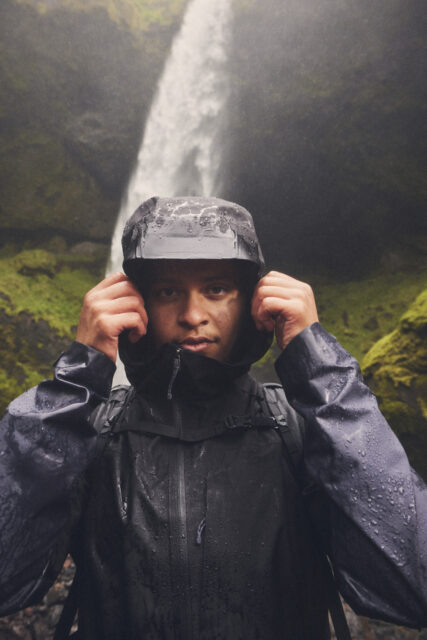
Are there any specific products that are best suited for the overland traveler, especially if they also enjoy additional outdoor activities?
Considering the wide array of activities that can be done from an overlanding rig, there are Gore-Tex Product technologies suitable for almost every activity and need—from high aerobic activities like running, biking, and hiking to seasonal winter sports such as skiing and snowboarding.
Two of our product technologies I would like to highlight specifically for overlanders are Gore-Tex Invisible Fit Footwear and Gore-Tex Active Garments. Both are highly versatile and [can] be found in products that are suitable to be enjoyed in multiple popular overlanding activities.
Gore-Tex Invisible Fit Footwear is integrated into a wide range of athletic shoes, including trail running styles, and offers versatility for many overlanding activities and general everyday wear. Footwear with this technology provides all the benefits of Gore-Tex Product technology without altering the fit or feel of the shoe. Gore-Tex Invisible Fit product technology can be found in a variety of the most popular trail running shoes from leading brands including Nike, Hoka, Merrell, and Brooks.
Another option that provides great protection and versatility for overlanders—and can be packed compactly into their own hoods—are products with Gore-Tex Active Garments product technology. These versatile garments are totally windproof, extremely breathable, super lightweight and carry our Gore-Tex Guaranteed to Keep You Dry Promise. These garments provide comfort and protection during fast-paced, high-aerobic activities and are great for layering.
Can you discuss in more detail a few of Gore’s key product technologies and how they work to keep someone dry and comfortable?
Gore-Tex Products with the black diamond label (or hangtag) carry our Guaranteed to Keep You Dry Promise. These products are designed, tested, and developed to be durably waterproof, totally windproof, and breathable. We think of Gore-Tex Products as a system; it’s the combination of the materials and construction that offer comfort and protection by keeping water droplets like rain from penetrating the garment, shoe, or glove while letting smaller water vapor molecules from sweat escape.

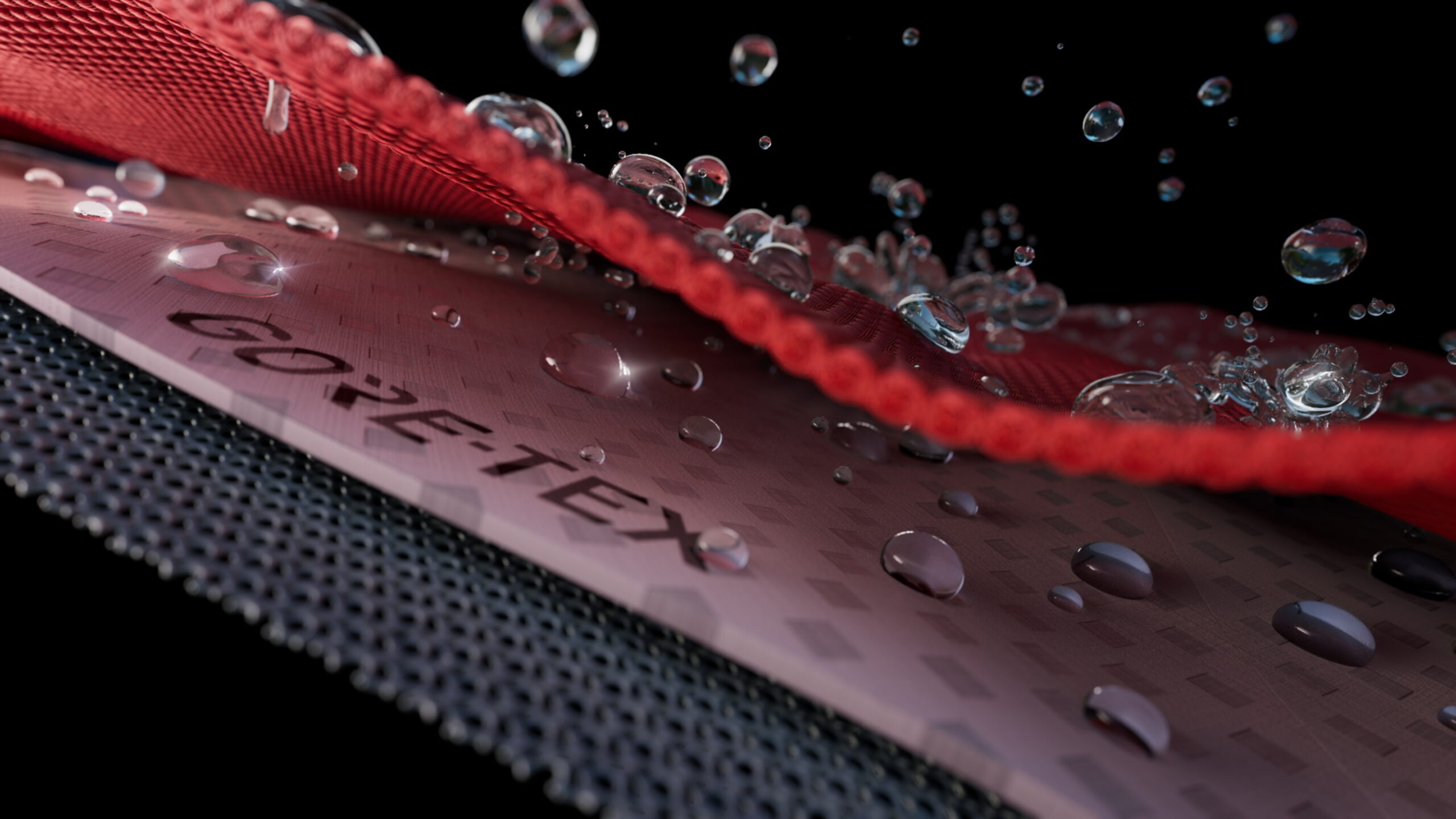
Gore-Tex Product technologies in garments and outerwear feature a semi-porous membrane and carefully selected textile(s). The membrane is bonded to the textile(s) using a lamination process, and Gore-Tex Seam Tapes are used to seal the seams in the apparel to make them waterproof. Gore-Tex Footwear product technology offers waterproof protection through a bootie inserted as a separate layer into the design of the shoe. In Gore-Tex Glove product technologies, the membrane is included in the design of the glove as an insert.
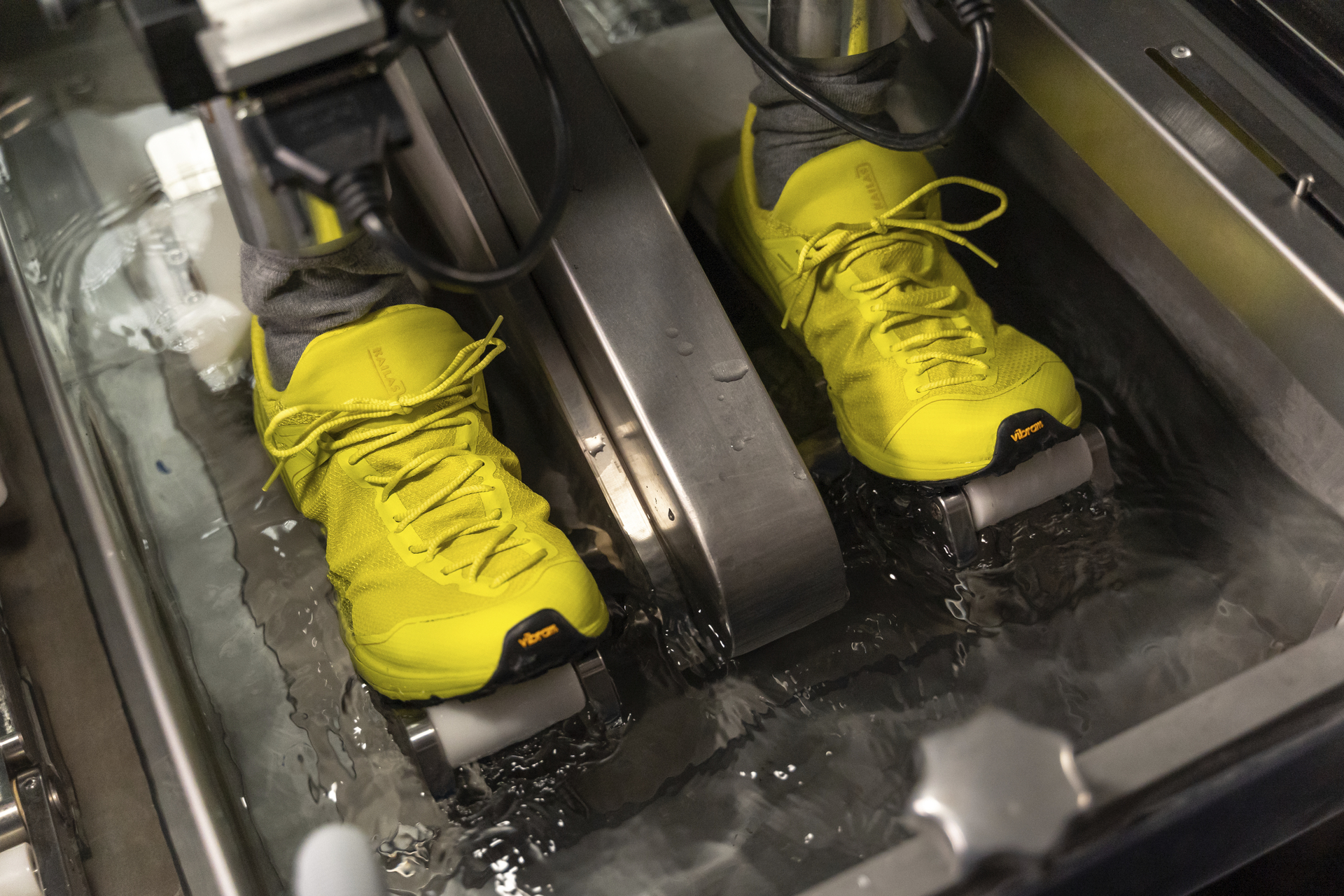
Walking simulator flexor test.
How can our readers ensure their Gore-Tex gear continues to perform at its best?
We’re told we shouldn’t wash a lot of premium garments and fabrics, or that we should take our valuables to a professional, but that’s definitely not the case with your Gore-Tex Products. For all Gore-Tex Products, proper wash, care, and repair extend the lifetime of your trusty gear, which is not only good for your planning and packing but is also one small step we can all take for the environment.
I clean and wash my Gore-Tex Products when I notice any visible dirt or stains, after taking part in vigorous activities where I have been sweating (yes, we all perspire), and at the very least before storing them at the end of the season. As a bonus, it helps keep my living space clean when I’m on the road. I also take a spray bottle of durable water-repellent spray with me for touchups along the road. I’m not a laundry expert, so I always check the wash and care section of our website, and the specific product label, before cleaning my products.
Last but not least, while our products are designed and tested to be rugged and durable, occasionally there is a need for a repair even with normal use. If your product is damaged, you’ll need a permanent repair by an authorized Gore repair center or by the manufacturing brand.
Our No Compromise Clause: We do not accept advertorial content or allow advertising to influence our coverage, and our contributors are guaranteed editorial independence. Overland International may earn a small commission from affiliate links included in this article. We appreciate your support.
Read more: Field Tested TCX Baja Gore-Tex Boots by Arden Kysely


